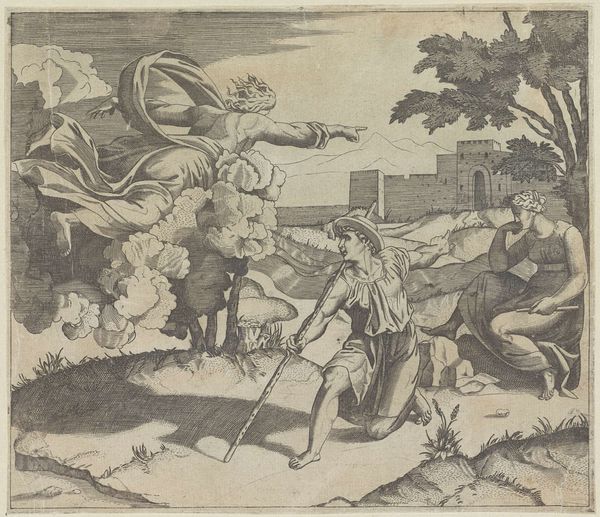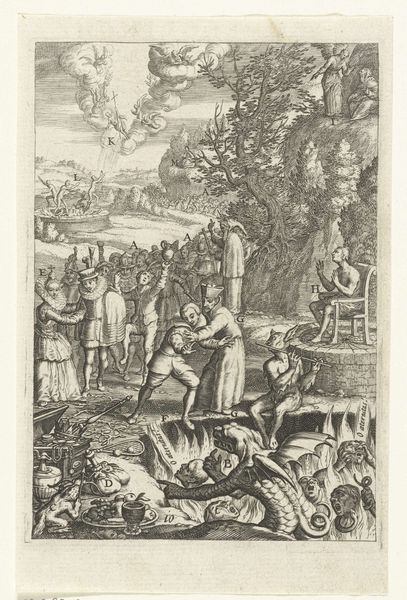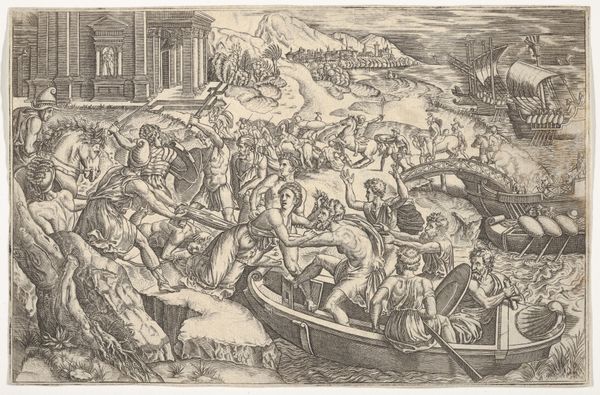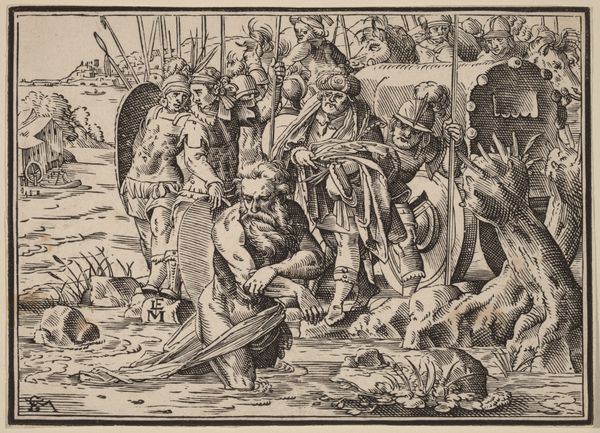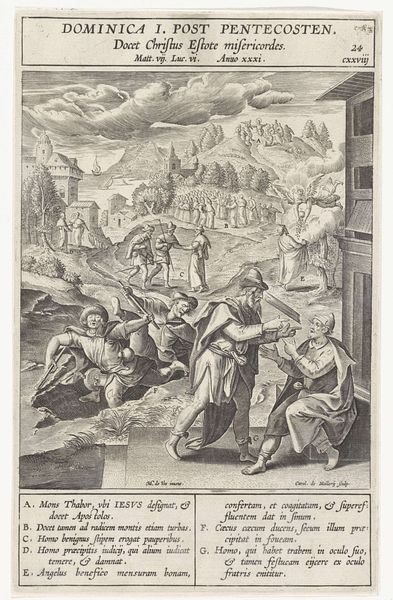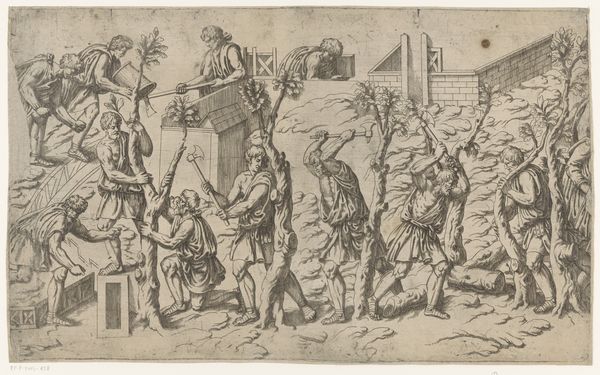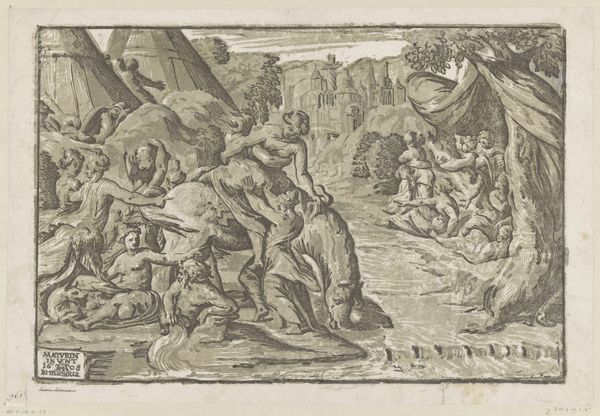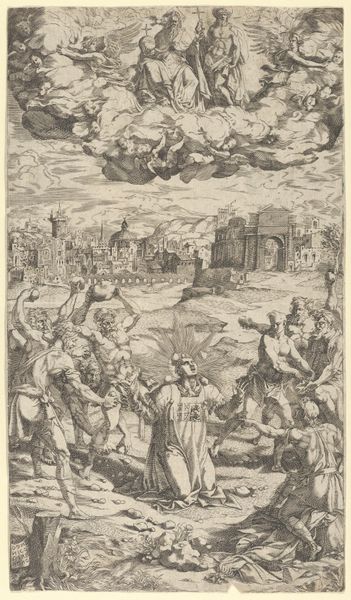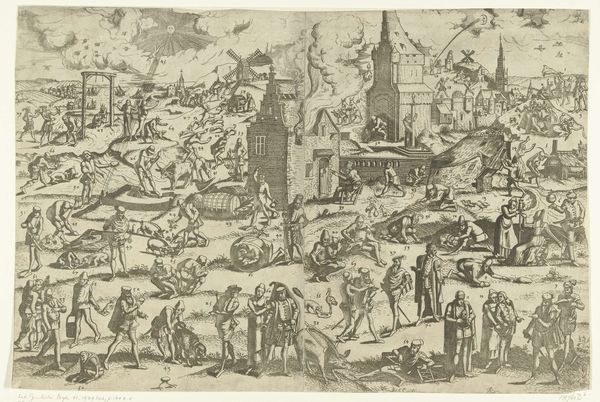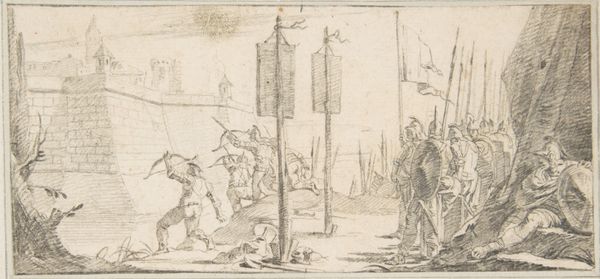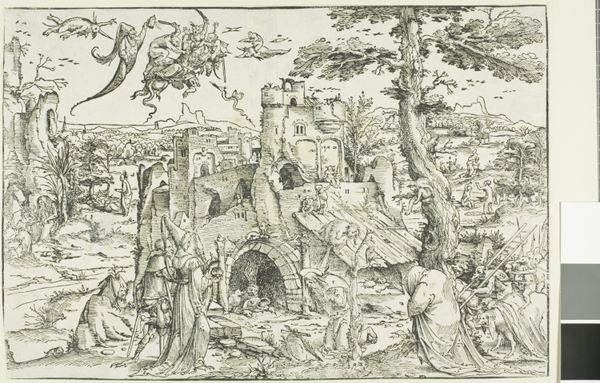
drawing, etching, ink
#
drawing
#
ink drawing
#
allegory
#
baroque
#
etching
#
landscape
#
figuration
#
ink
#
history-painting
Dimensions: height 325 mm, width 444 mm
Copyright: Rijks Museum: Open Domain
Oliviero Gatti created this allegorical image of a king and queen near a burning pyre sometime between 1610 and 1630, using etching. Etching is an indirect intaglio process, where a metal plate is coated with a waxy, acid-resistant ground. The artist then scratches an image into the ground with a pointed tool, exposing the metal. The plate is then immersed in acid, which bites into the exposed lines, creating recessed lines. Ink is applied to the plate, filling the etched lines, and the surface is wiped clean. Finally, the plate is pressed onto paper, transferring the ink and creating the print. In Gatti’s time, printmaking facilitated the wide dissemination of images, and was tied to the rise of capitalism and a burgeoning market for art. This detailed print embodies a great amount of labor, from the preparation of the plate to the final printing. The linear quality of the image is a direct result of the etching process and the skill of the artist in controlling the acid bite. Considering these materials, making, and the historical context gives us a deeper appreciation for the technical skill of this artwork.
Comments
No comments
Be the first to comment and join the conversation on the ultimate creative platform.
